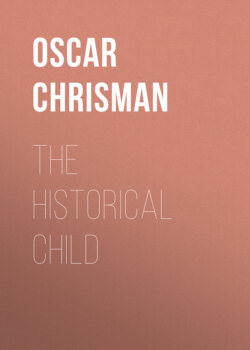Читать книгу The Historical Child - Oscar Chrisman - Страница 30
На сайте Литреса книга снята с продажи.
Training of the Inca and the Order of the Huaracu.
ОглавлениеTable of Contents
"In his early years, the royal offspring was intrusted to the care of the amautas, or 'wise men,' as the teachers of Peruvian science were called, who instructed him in such elements of knowledge as they possessed, and especially in the cumbrous ceremonial of their religion, in which he was to take a prominent part. Great care was also bestowed on his military education, of the last importance in a state which, with its professions of peace and good will, was ever at war for the acquisition of empire.
"In this military school he was educated with such of the Inca nobles as were nearly of his own age; for the sacred name of Inca—a fruitful source of obscurity in their annals—was applied indifferently to all who descended by the male line from the founder of the monarchy. At the age of sixteen the pupils underwent a public examination, previous to their admission to what may be called the order of chivalry. This examination was conducted by some of the oldest and most illustrious Incas. The candidates were required to show their prowess in the athletic exercises of the warrior; in wrestling and boxing, in running such long courses as fully tried their agility and strength, in severe fast of several days' duration, and in mimic combats, which, although the weapons were blunted, were always attended with wounds, and sometimes with death. During this trial, which lasted thirty days, the royal neophyte fared no better than his comrades, sleeping on the bare ground, going unshod, and wearing a mean attire—a mode of life, it was supposed, which might tend to inspire him with more sympathy with the destitute. With all this show of impartiality, however, it will probably be doing no injustice to the judges to suppose that a politic discretion may have somewhat quickened their perceptions of the real merits of the heir-apparent.
"At the end of the appointed time, the candidates selected as worthy of the honors of their barbaric chivalry were presented to the sovereign, who condescended to take a principal part in the ceremony of the inauguration. He began with a brief discourse, in which, after congratulating the young aspirants on the proficiency they had shown in martial exercises, he reminded them of the responsibilities attached to their birth and station, and, addressing them affectionately as 'children of the Sun,' he exhorted them to imitate their great progenitor in his glorious career of beneficence to mankind. The novices then drew near, and, kneeling one by one before the Inca, he pierced their ears with a golden bodkin; and this was suffered to remain there till an opening had been made large enough for the enormous pendants which were peculiar to their order, and which gave them, with the Spaniards, the name of orejones. This ornament was so massy in the ears of the sovereign that the cartilage was distended by it nearly to the shoulder, producing what seemed a monstrous deformity in the eyes of the Europeans, though, under the magical influence of fashion, it was regarded as a beauty by the natives.
"When this operation was performed, one of the most venerable of the nobles dressed the feet of the candidates in the sandals worn by the order, which may remind us of the ceremony of buckling on the spurs of the Christian knight. They were then allowed to assume the girdle or sash around the loins, corresponding with the toga virilis of the Romans, and intimating that they had reached the season of manhood. Their heads were adorned with garlands of flowers, which, by their various colors, were emblematic of the clemency and goodness that should grace the character of every true warrior; and the leaves of an evergreen plant were mingled with the flowers, to show that these virtues should endure without end. The prince's head was further ornamented by a fillet, or tasselled fringe, of a yellow color, made of the fine threads of the vicuña wool, which encircled the forehead as the peculiar insignia of the heir-apparent. The great body of the Inca nobility next made their appearance, and, beginning with those nearest of kin, knelt down before the prince and did him homage as successor to the crown. The whole assembly then moved to the great square of the capital, where songs and dances and other public festivities closed the important ceremonial of the huaracu."22
